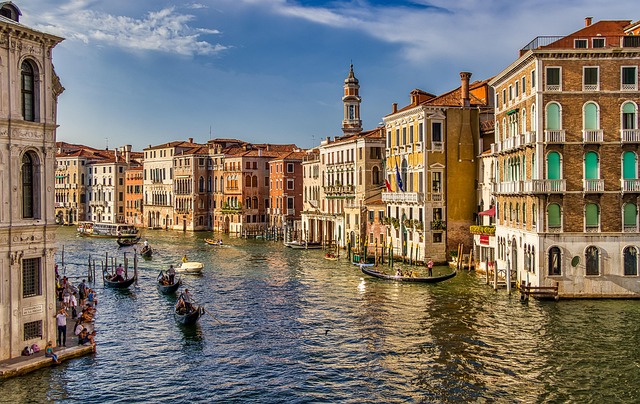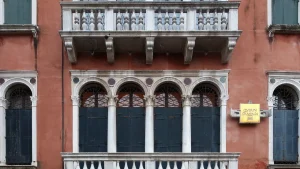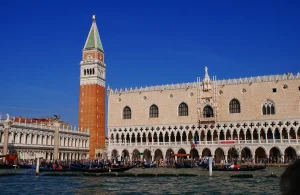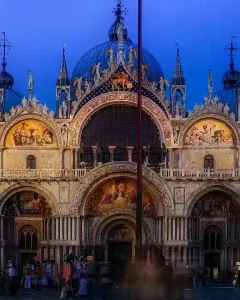How to Get Around Venice — The Complete 2025 Guide to Walking, Boats, and Local Secrets
Venice isn’t just another city. It’s a living, breathing maze built on 118 islands, stitched together by more than 400 bridges, crossed by quiet canals, and — gloriously — free of cars. ✨
But that magic can also be disorienting. Many first-timers step off the boat, look around at the alleys and waterways, and whisper, “Wait… how do I actually get anywhere?” Don’t worry — Venetians have been perfecting this dance for centuries. With a few insider tips, you’ll be zigzagging through calli, hopping on vaporetti, and finding your way like you were born here.
Here’s your complete, 4000-word local guide to getting around Venice — minus (most of) the confusion. 😉
🚫 Step 1: Welcome to the Car-Free Zone
One of the first things you’ll notice is what Venice doesn’t have: cars, buses, scooters, bikes, or horns. This is the world’s largest pedestrian zone, and the rhythm of the city follows footsteps and ripples.
Your main modes of transport:
- 🚶 Walking — the true Venetian commute.
- 🛥️ Vaporetto — the public “bus” that floats.
- 🚤 Water taxi — fast, private, and cinematic.
- 🛶 Traghetto or gondola — short crossings and romance.
This simplicity is part of the city’s genius. It forces you to slow down, to listen to water against stone instead of traffic noise. Still, orientation helps — start with our Venice for First Timers Guide before you dive in.
🦶 Step 2: Walking — The Real Venetian Transport
Venice is wonderfully walkable. The distance between most landmarks is short: the Rialto Bridge to St Mark’s Square is just a 10-minute stroll (unless you pause for gelato — you will 🍦). Walking lets you absorb details tourists on boats miss — the scent of coffee from a hidden osteria, laundry flapping between windows, light reflecting off wet stone.
Local Walking Wisdom
- Follow the yellow signs: You’ll see arrows reading Per San Marco, Per Rialto, or Per Accademia. They’re your low-tech GPS.
- Learn the lingo: Calle = street, Campo = square, Rio Terà = filled-in canal.
- Be bridge-wise: With 400+ bridges, expect steps. Use a porter service if your luggage weighs more than your enthusiasm.
- Look up, not down: House numbers run city-wide, not by street. Addresses are high on walls — scan above doorways.
👉 Curious how far your feet can take you? Read Can You Walk Everywhere in Venice?
🛥️ Step 3: Vaporetto — Venice’s Floating Bus System
The vaporetto (ACTV water bus) is the backbone of Venetian life. Locals commute on it, students ride it to school, and visitors quickly realize it doubles as the best sightseeing cruise in Europe.
Essential Lines
- Line 1 — The Grand Canal Route: Slow but breathtaking; stops at every major sight from Piazzale Roma to San Marco.
- Line 2 — The Express: Fewer stops, great for quick travel between Tronchetto, Piazzale Roma, Rialto, and San Marco.
- Lagoon Lines (4.1, 4.2, 12): Reach Murano, Burano, Torcello, and Lido Island.
Insider Vaporetto Tips
- 🎟️ Buy tickets before boarding — fines are steep.
- 🌅 Stand at the bow for cinematic Grand Canal views.
- ⏰ Rush hour is real — early mornings and 5-7 p.m. are busiest.
- 💳 Consider a multi-day Vaporetto Pass to save money if you’ll ride often.
👉 Once ashore, join our Venice Orientation Walking Tour to connect the dots on foot.
🚤 Step 4: Water Taxis — Fast, Private, and Glamorous
When you crave speed, comfort, or cinematic flair, nothing beats a private water taxi. These gleaming wooden boats offer direct, door-to-door transfers across the lagoon or through the canals.
Why Choose One
- 🚪 Door-to-door service — most hotels have private docks.
- ⚡ Speed — no stops, just smooth navigation.
- 🎬 Experience — feels straight out of a Bond film.
Perfect for airport arrivals, cruise departures, or romantic nights. Yes, pricier than public boats, but worth every euro for the time and serenity saved.
👉 See our Venice Airport Transfer Guide for step-by-step help arranging yours with Tour Leader Venice.
🛶 Step 5: Traghetti — The Gondola Shortcut Locals Use
Before bridges dominated the skyline, Venetians crossed canals by gondola. The tradition survives as the traghetto — a simple ferry service that carries passengers across the Grand Canal in minutes.
- 📍 Locations: Roughly half-a-dozen crossings between major stops like Santa Sofia ↔ Rialto Market and San Tomà ↔ Sant’Angelo.
- 💶 Cost: €2–€3 cash.
- 🧍♂️ Etiquette: Locals stand — you can too, or sit if balance feels optional.
It’s the cheapest gondola ride in town and the most authentic two minutes you’ll spend on the water.
👉 Pair it with a Neighborhood Walking Tour to see daily Venetian life up close.
❤️ Step 6: Gondolas — Tourist Treat or Timeless Tradition?
Once the city’s primary transport, gondolas now glide for romance rather than errands. Yet they remain Venice’s soul — handcrafted, black-lacquered, and steered by gondoliers whose families have done this for generations.
Local Advice
- 🕰️ Best time: Early morning or twilight for quiet canals and golden light.
- 📍 Best places: Avoid the busy Grand Canal; try Dorsoduro or Cannaregio for intimacy.
- 💶 Cost: Fixed €90 for 30 minutes (day), €110 at night (official rates).
👉 For deeper cultural insight, explore our Romantic Venice Experiences or book a Private Gondola Ride through Tour Leader Venice.
🧭 Step 7: How Not to Get (Too) Lost
Everyone gets lost in Venice. Even locals. But that’s half the fun — because here, getting lost usually means finding something better.
- 📱 Ignore strict GPS routes — Google Maps can’t handle dead-end canals.
- ➡️ Follow signs to major landmarks rather than street names.
- 🏛️ Use landmarks — “behind the church” works better than addresses.
- 💫 Embrace detours — the city rewards curiosity.
👉 Want to master the maze fast? Our Orientation Tour teaches real navigation tricks locals use daily.
📱 Step 8: When Technology Helps (and When It Doesn’t)
Digital tools can enhance your trip — if you know their limits.
Smart Moves
- 📲 Download offline maps before arriving.
- 🕐 Check real-time vaporetto schedules on ACTV’s website.
- 🔋 Keep a power bank — your camera will work overtime.
Skip the Mistakes
- ❌ Don’t expect Uber, taxis, or scooters — they’re banned.
- ❌ Don’t rely on Google Maps in tiny calli — its GPS bounces off walls.
👉 First-time visitor? Revisit our Venice for First Timers Guide for practical arrival prep.
🌊 Step 9: Exploring the Lagoon — Beyond the Main Islands
Venice doesn’t end at St Mark’s. Beyond the city stretch the quiet lagoon islands — each with its own rhythm and craft heritage.
How to Hop Between Islands
- 🚢 Public Boats (ACTV): Lines 4.1 & 4.2 for Murano, Line 12 for Burano & Torcello.
- 🚤 Private Lagoon Tours: Perfect for skipping crowds and customizing your route.
👉 Discover authentic craftsmanship with our Murano Glassblowing Tour or combine islands with our 6-Hour Island Hopping Experience.
🍷 Step 10: Final Local Advice
Venice isn’t a city to conquer — it’s a city to surrender to. The best navigation tip is simple: slow down. Let the lagoon set your pace.
Walk until you smell espresso, then stop. Ride a vaporetto just to watch palaces drift by. Cross the Grand Canal on a traghetto because you can. When you get lost — smile. That’s Venice showing you something unexpected.
👉 For truly immersive exploration, browse our Private Venice Tours and Off-the-Beaten-Path Experiences.
✨ Quick Recap
- 🚶 Walking is king — embrace it.
- 🛥️ Vaporetti = public transport with views.
- 🚤 Water taxis for speed & style.
- 🛶 Traghetti for local shortcuts.
- 📍 Landmarks > street names for navigation.
With these tricks, you’ll move through Venice like a local — or at least convincingly enough to fool the other tourists. 😉
Benvenuti nella labirintica magia di Venezia. 🌊🇮🇹
👉 Plan your Venice transfers and tours with Tour Leader Venice for a completely private, tailor-made experience led by locals who know every canal by heart.
How do you get around Venice without cars?
Venice is entirely car-free — a city built for walking and boats. Locals move on foot through narrow alleys and bridges, then use vaporetti (public water buses), water taxi, or traghetti (gondola ferries) to cross canals. For a truly Venetian arrival, book a Private Boat Transfer or Private 1-Hour Boat Tour to glide through the lagoon in comfort and style.
Is Venice walkable?
Absolutely — Venice is one of the most walkable cities in the world. Most landmarks are within 15 minutes on foot, and wandering is half the joy. Expect bridges (400+ of them!) and narrow alleys that twist like a labyrinth. To learn the smartest routes and avoid dead ends, join our Off-the-Beaten-Path Orientation Tour — it’s the easiest way to navigate like a true local.
What’s the best way to travel between Venice’s islands?
You can explore the lagoon using ACTV public boats (vaporetti) or enjoy a more exclusive experience with a private island-hopping tour. Public lines like 4.1, 4.2, and 12 connect Murano, Burano, and Torcello, but a private tour lets you discover hidden islets and artisan studios at your own pace. Try our 6-Hour Island Hopping Experience for the most beautiful, effortless way to explore Venice beyond the crowds.






